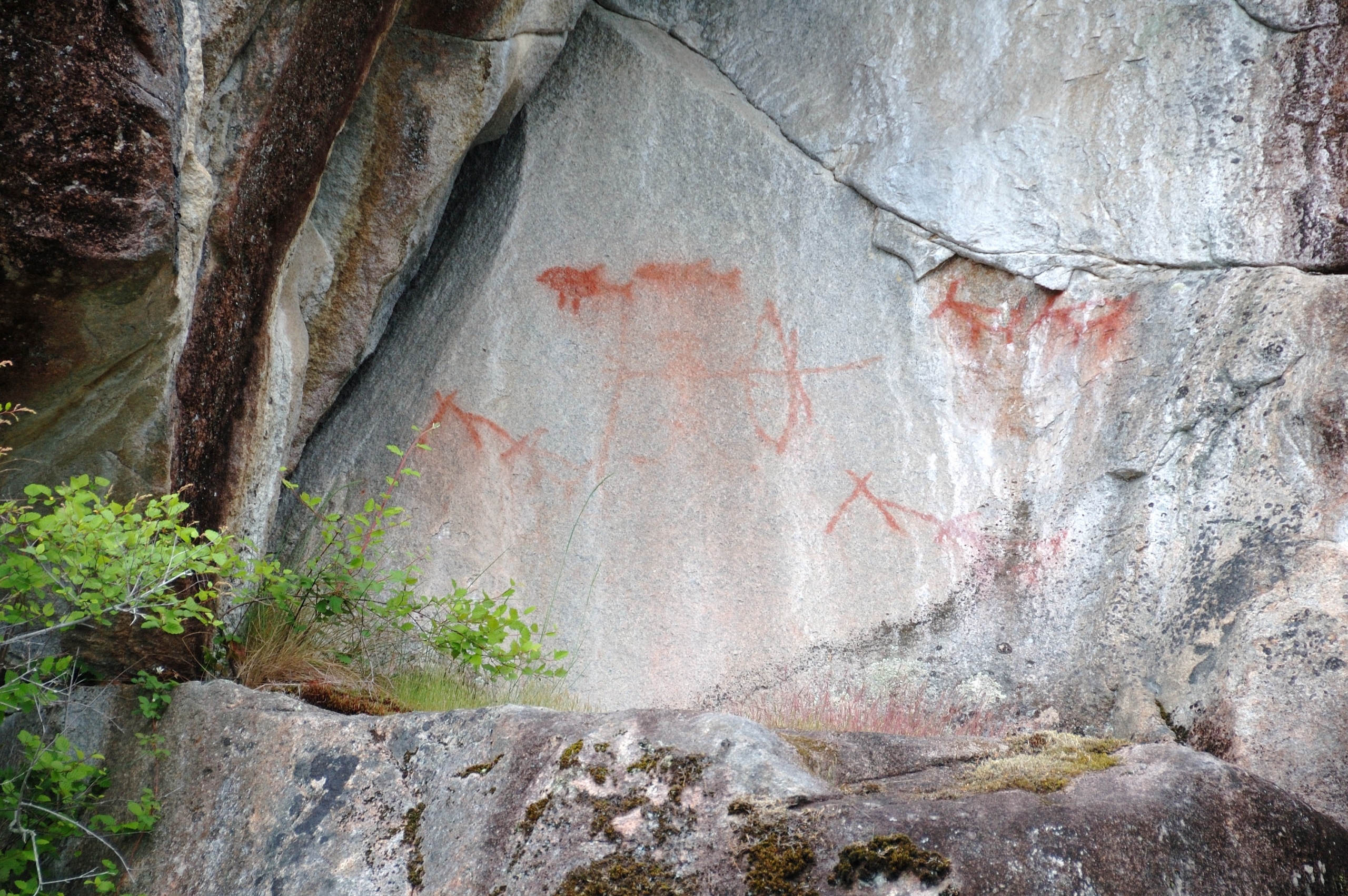Cruising for Indigenous Art – Cliffside Pictures In Time
9th November 2021
One of the many draws to cruising the British Columbia coast is the sense of adventure. Another is the pictographs, thousands of which were painted on seaside rock cliffs by indigenous artists.

Thousands of pictographs dot coastal British Columbia.
For more than 10,000 years, indigenous people have shared this stunning, rich, and wild coastal region with eagles, bears, orcas, and salmon. Some of the history and stories were captured and communicated via pictographs, a drawing or painting of symbols typically on a rock surface. Obscure as the pictograph messages may now be, they were a common form of communication.

Pictographs are mysterious paintings marking ancient cultural sites of indigenous people.
These mysterious paintings, which are ancient cultural sites of British Columbia’s First Nations People, can be found throughout the Inside Passage.
Whether these pictographs represent people and animals, mythological creatures or constellations is, in many cases, unclear. In traditional hunter-gather societies, the human and “natural” worlds are interwoven by threads of spiritual power. The natural and supernatural worlds are inseparable, and these mysterious messages from times gone by continue to speak to us from cliff walls.

Pictograph first discovered in 1792 by botanist Archibald Menzies.
Finding these intricate representatives left by indigenous people hundreds or even thousands of years ago is not easy. It involves cruising slowly along the shoreline scanning for protective rock overhangs, looking for suitably light-colored rock faces and scrutinizing every inch for red pigment. The search is both frustratingly time-consuming and an exciting adventure; and the thrill of discovering evidence of a culture that preceded you is exhilarating.
Found above the high-water mark and often under ledges where they have protection from the weather, pictographs were made from red ochre, a deep red powder from iron oxide that was acquired through trade with people at Bella Bella. The powder was mixed with a binding agent such as mashed salmon eggs or animal fat to aid adherence to the rock surface. At times, black soot was also used for coloring. The mixture was applied to the rock surface with brushes made of animal hair, sticks or fingers. Rock art is sealed to their fate of fading away over time. The smooth oily paint can last a century or longer, depending upon the site. The likelihood of a pictographs surviving more than 3,000-years due to erosion or calcium deposits is unlikely.

Pictographs are where the natural and supernatural worlds meet.
To discover native history of the region, modern day explorers need both patience and respect. Trees shrubs or thick layers of moss may camouflage these ancient treasures. In some cases, rockslides and crumbling stone have obliterated them entirely. Pictographs are often found on light colored rock bluffs throughout the area, and they are protected by British Columbia’s Heritage Conservation Act, which prohibits damage to the site or removal of material that constitutes part of the site. Cruising anthropologists are asked not to touch the pictographs as the oil from your hands can accelerate the arts deterioration. Please be respectful and rather than touching, take a picture.

Pictographs represent people, animals, unearthly beings or constellations.
Capturing a quality photograph of a pictograph can be a challenge. Sometimes it is difficult to get just the proper angle, and often an adjustment in exposure is required. The use of a flash helps eliminate any shadows that may be cast over the subject. Because pictographs are usually located on a light-colored rock, the best time to capture a photo is when the sun is not shining directly on it. Photo editing software can be used to enhance the picture by infusing additional red, make images and symbols to pop out.
Looking for and discovering pictographs will provide a memorable Indiana Jones moment.
(Deane Hislop in partnership with Freedom Marine)


